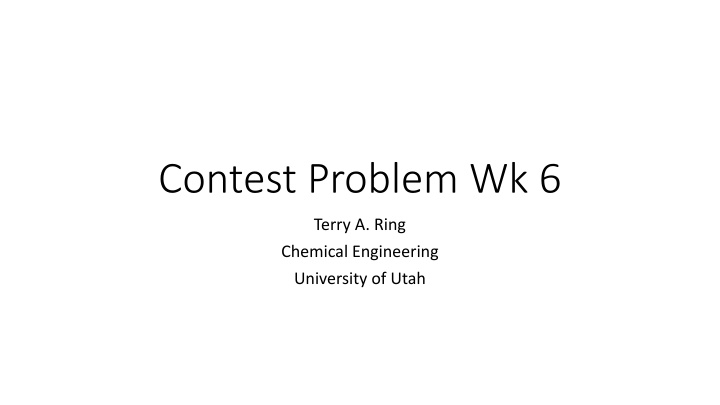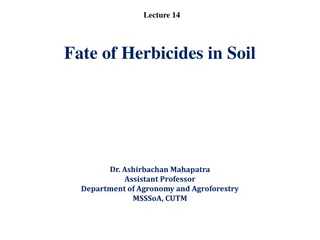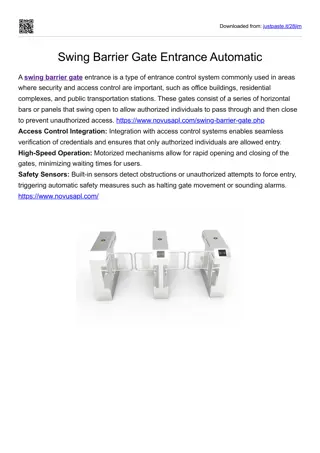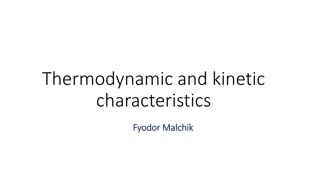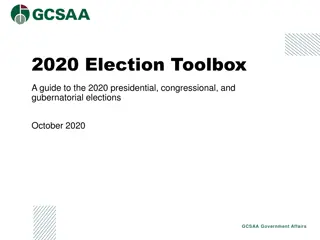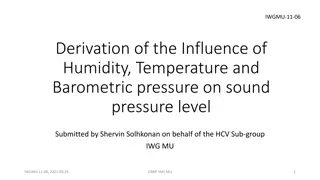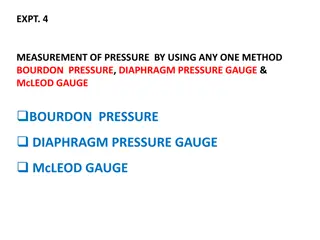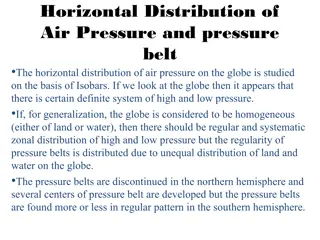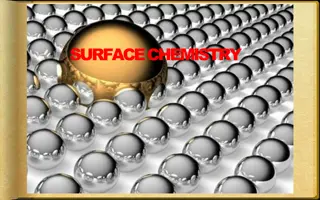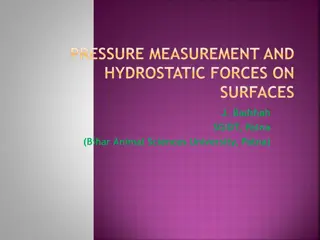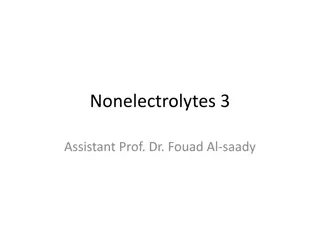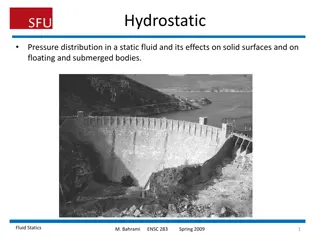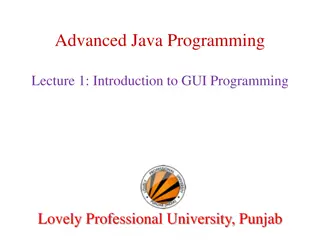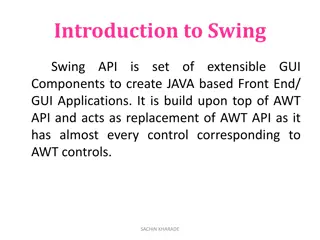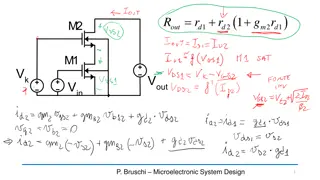Pressure Swing Adsorption Calculations for Chemical Engineering Study
Providing guidance on pressure swing adsorption calculations, designing an adsorption column in Aspen, and troubleshooting recirculation loop errors for chemical engineering studies. Includes advice on progress report memos and separating downstream and upstream processes.
Download Presentation

Please find below an Image/Link to download the presentation.
The content on the website is provided AS IS for your information and personal use only. It may not be sold, licensed, or shared on other websites without obtaining consent from the author.If you encounter any issues during the download, it is possible that the publisher has removed the file from their server.
You are allowed to download the files provided on this website for personal or commercial use, subject to the condition that they are used lawfully. All files are the property of their respective owners.
The content on the website is provided AS IS for your information and personal use only. It may not be sold, licensed, or shared on other websites without obtaining consent from the author.
E N D
Presentation Transcript
Contest Problem Wk 6 Terry A. Ring Chemical Engineering University of Utah
Review of Progress Memos On the whole they are adequate. Some are very good! Only 2 weeks left! Next Progress Report Memo Due 15 April The Last Progress Report Final Report Due 21 April 2020 Relief at Last!
Questions for the Week I am stuck in solving the pressure swing adsorption calculations. I have the third version of the book so it does not align perfectly with your equations you provided in the slides. Equations are: Adsorption Breakthrough Regeneration
Questions for the Week How do I design an Adsorption Column in Aspen? Aspen Plus does not have an Adsorption Column as it is a dynamic unit operation. Hand Calculations will be fine. An analytical solution for a transient Adsorption column is available in your Mass Transfer book. Equation 17.69 Wankat, P.C., Separation Process Engineering, 2nd Ed., Prentice Hall p. 680 note: 1-erf(x) solution This analytical solution assumes a simple linear equilibrium relation between adsorbed amount and concentration in the gas phase. The solution gives the outlet gas concentration as a function of time assuming an empty bed at the beginning. It can also be used to determine the removal of a full bed of adsorbed species as a function of time to account for the regeneration of the bed. See Equation 17.74, note: 1+erf(x) solution We have done and Absorption Column in Aspen in HW 5 Amine Absorber for CO2.
Questions for the Week How do I get the recirculation loop to converge. Various errors occur in the loop. To get the desired production of NH3, I would select the flow rate of the nitrogen containing stream to be fixed (to get the desired molar production rate of ammonia) and then only set a design spec on the H2 to meet the needs for the reaction. Please note the reaction stoichiometry of the reaction - you need 0.5 moles of N2 to make a mole of NH3. In the problem statement, it is mentioned that the target production rate of the plant should be 50 tonnes/day. Is that an exact value that we should be getting or is it acceptable to have a production rate greater than that (about 55 tonnes/day)? The differences in flow will affect the size of equipment and the cost. It is easy to resize, by just lowering the feed by the 10% that you see as your present over capacity.
Questions for the Week My team separated the downstream and the upstream processes. Is that ok? I do not see anything wrong with your approach. Please be sure that the flows of H2 and N2 are what the downstream plant needs. If there is not sufficient flow of either of these raw materials you will have a system that will not work. With the correct flows you can size the various pieces of equipment and perform costing calculations.
Questions Currently, we are stuck with the separation of CO2. We have tried to add in MEA and its electrolytes, but we are getting errors in our simulation. The error comes from the specification of method. We used ElectRK in HW #5, but when we run the simulation it doesn t run with the PSRK method chosen. Do you have any suggestions on any potential methods that we could try and implementing? You will need to use ElectRK as in HW 5 for the CO2 absorber. It can be simulated in Aspen on its own just use the appropriate feed from the H2 generation Reforming and Water-Gas-Shift reactors. The stream clean of CO2 can then be transferred to another Aspen Simulation for the Ammonia reaction. You will have to keep the different simulations on separate Aspen files. It is possible to have different Thermo-packages for different parts of a single Aspen Simulation but this is not simple to implement so I suggest separate Aspen simulations that use but one thermo-package each.
What should I use for the composition of Natural Gas for the Mid-West USA? You can use any referenceable Natural Gas Composition. But here is 1 without Sulfur. https://www.e-education.psu.edu/fsc432/content/natural-gas-composition-and-specifications Slide 18 from https://www.slideshare.net/JenniferMaclachlan/pittcon-fracking-paper-driscoll-maclachlan-final
Going Forward Stay Focused, Stay Sane these last 2 weeks. Please send your questions via email to ring@chemeng.Utah.edu
